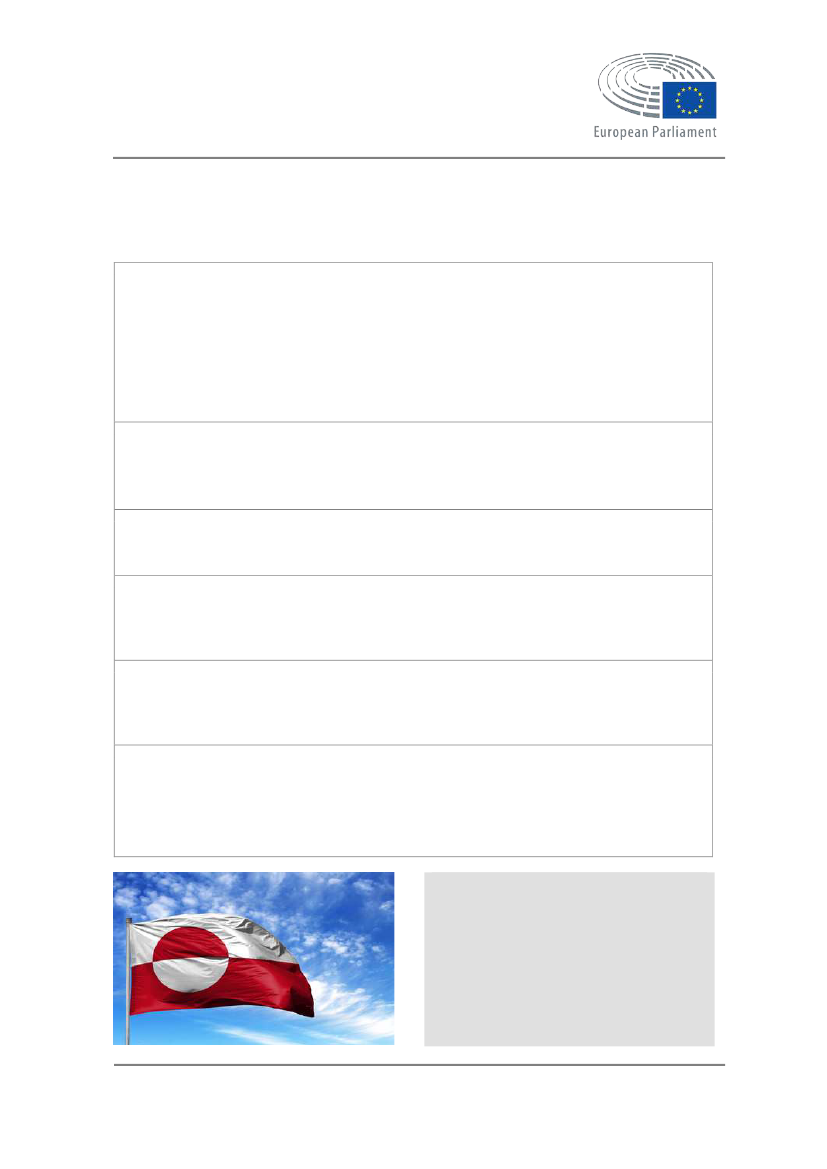
Briefing
How the EU budget is spent
April 2019
EU cooperation with Greenland
In a nutshell
The overall aim of the European Union-Greenland Partnership Agreement is to boost ties and
cooperation between the EU and Greenland, with education and training as one of several
key areas of cooperation. As part of the partnership, and taking Greenland's needs into
account, the focal point of EU-Greenland financial cooperation is education and training, with
a special emphasis on boosting the pre-school and elementary school system, as well as on
providing support for vocational education and post-elementary education.
EU's multiannual financial framework (MFF) heading and policy area
Heading 4 – Global Europe
The European Union-Greenland Partnership (21 07)
2014-2020 total amount programmed (in current prices and as % of total MFF)
Commitments:
€217.81 million (0.020 %)
2018 budget (in current prices and as % of total EU budget)
Commitments:
€32.40 million (0.021 %)
Payments:
€32.33 million (0.023 %)
2019 budget (in current prices and as % of total EU budget)
Commitments:
€32.90 million (0.020 %)
Payments:
€32.37 million (0.022 %)
Methods of implementation
Direct management (European Commission grants budget support for the implementation of
the Greenland education programme, which is led by Greenland's Ministry of Education,
Church, Culture and Gender Equality, in cooperation with other ministries and stakeholders).
In this briefing:
•
EU role in the policy area: legal basis
•
Cooperation objectives
•
Funded measures
•
Assessment of cooperation/action
•
Other EU action in the same field
EPRS | European Parliamentary Research Service
Authors: Naja Bentzen and Alessandro D'Alfonso
Members' Research Service
PE 637.922
EN